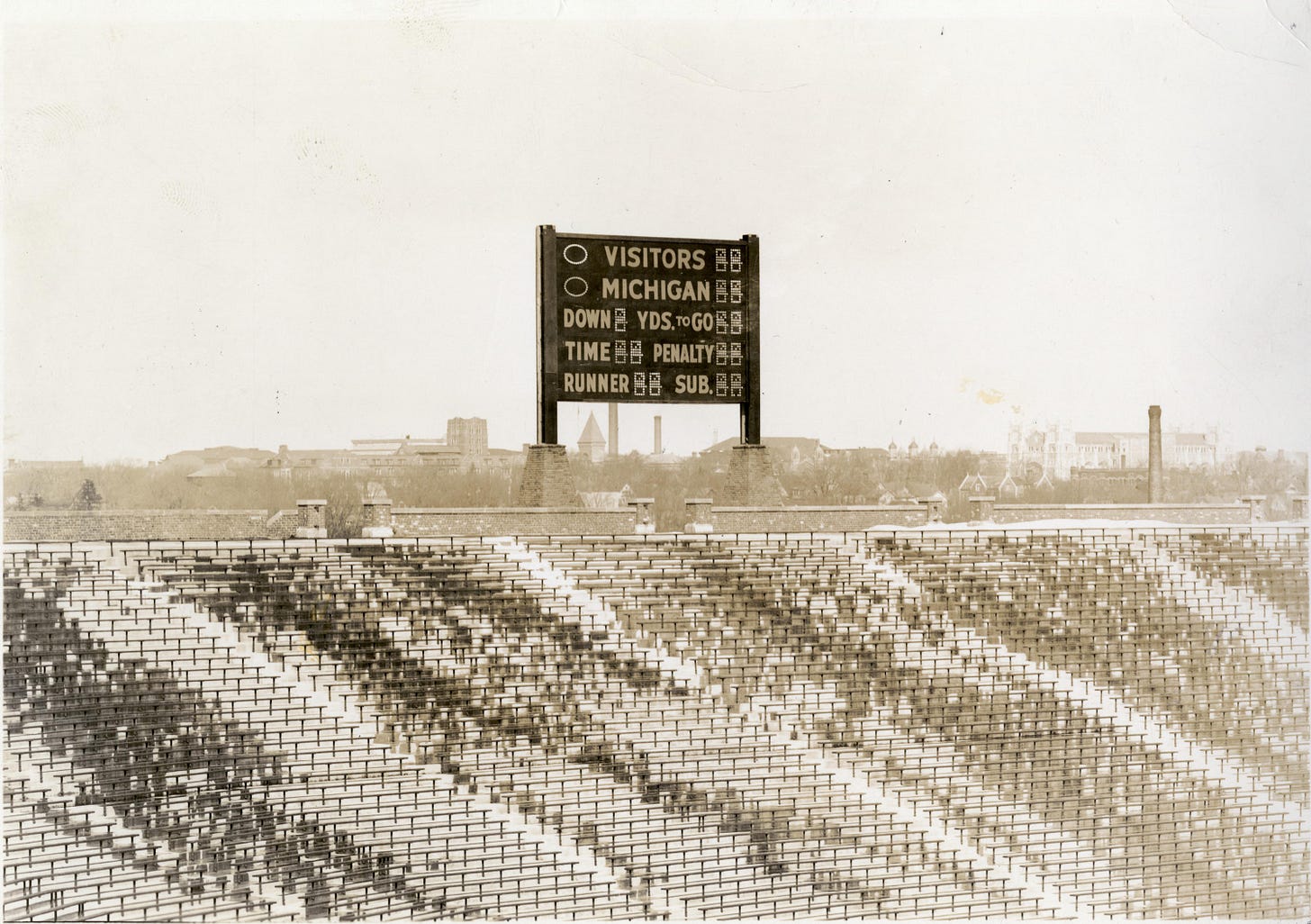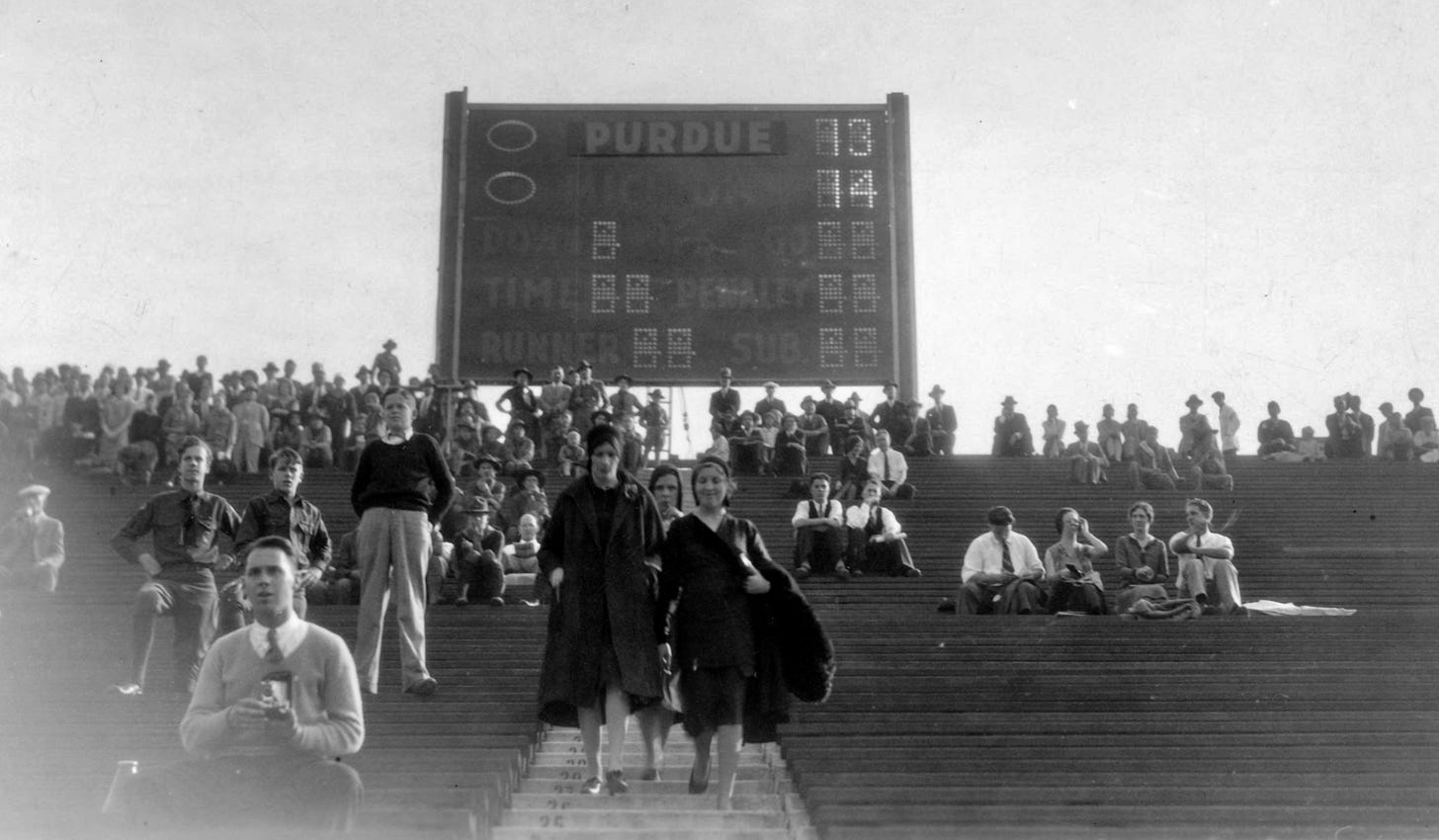Today's Tidbit... Keeping Score At The Big House
Football was first played on college greens and local pastures lacking the simplest creature comforts. However, things improved quickly as the top games moved to polo grounds and professional baseball stadiums with the capacity to seat thousands or tens of thousands.
In part, to limit the commercialism of the game, some leading colleges banned games played off campus, which pushed schools to build on-campus stadiums. Most were simple wooden structures that handled football, baseball, and track. Over time, the all-purpose facilities became separate venues, including massive football-only stadiums capable of handling the large crowds attending rivalry games.
The football fields at Michigan followed that pattern. After playing wherever they could find open ground, the school opened Regents Field in 1893. Upon opening, it held 400 fans, doubled the next year, and grew eightfold the next before more than doubling again in 1900 to handle 15,000 people.

Ferry Field replaced Regents Field in 1906. It held 18,000 fans when it opened, growing to 40,000 seats and serving as Michigan's home field through 1926. Michigan Stadium opened in 1927 with a capacity of 72,000, which increased by 10,000 or so with temporary bleachers. The Big House was a modern-day marvel with all the latest features but one - a state-of-the-art scoreboard. Fielding Yost, the AD, had budgeted for the first electronic scoreboard anywhere, but the technology was not yet ready. Instead, they installed a run-of-the-mill scoreboard requiring operators to manually post scores and other information.

By 1930, however, the technology was ready, and so was Michigan, allowing the Wolverines to install the first electronically-controlled scoreboards, with one at either end of the bowl. Standing 18 feet six inches tall and 27 feet 8 inches wide, they had batches of light bulbs forming numbers when lit, all controlled from the press box.

The new scoreboards were to debut in the third game of the year against Michigan State, but technical problems kept that from happening. Since the game ended in a 0 - 0 tie, the scores on the scoreboard would not have changed anyway, but they fixed the issue, and the new system proudly displayed the 14 -13 winning score against Purdue the following week.

Michigan's technical marvels stood tall for thirty-six years before being replaced in 1968. Now the Big House has large video displays at either end, just like everyone else, but they still beat everyone to the punch back in 1930.
Football Archaeology is reader-supported. Click here to buy one of my books or otherwise support the site.

